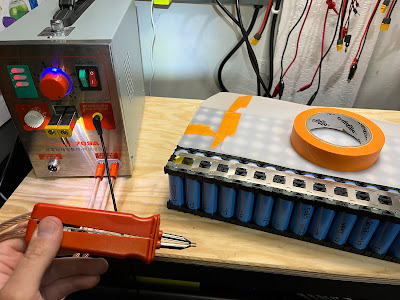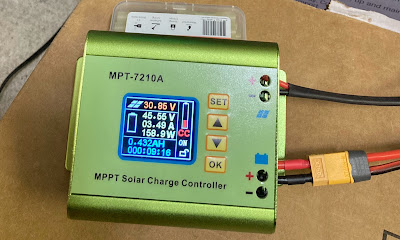Now that my giant DIY powerwall has been built using parallel battery packs, the question came up about how current is shared between the different packs. Most packs are the same, but the second style of packs has a different capacity, different 18650 cell model, and different number of cells in parallel. What does this mean for current sharing between these packs as they discharge? Let’s find out!
Going into this, I suspected that the current flow from each pack would be proportional to its capacity, because if a pack is rated at X number of amp-hours, that current all needs to be delivered over the course of discharge. While in the end this was correct on average, what I did not expect was the amount of variation within the discharge curve.
To find out how the current is shared between the packs, I took one of each type (13s5p/15.4Ah and 13s4p/12.5Ah), charged them up fully, and put them in parallel. Using a DC load to discharge tells me very accurately the total current coming out of the packs, and a current meter in line with one of them lets me know the fraction coming from each pack. (The two packs must combine to total the current being drawn by the DC load).
Test setup
First, confirming that the current measurements are accurate—they are.
 |
| Showing 4A flowing from the power supply (top) to the DC load (middle). Fluke meter (bottom) is in-line and agrees. Clamp meters (right) are always a little off; this one is decent. |








